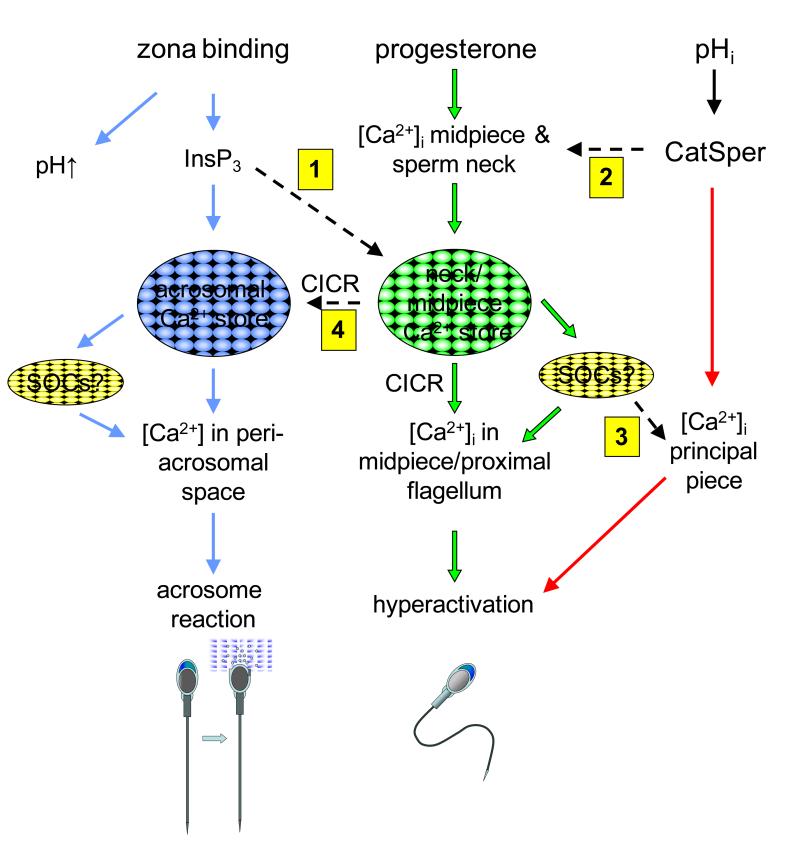Figure 5.
Model for roles and interactions of Ca2+ stores in mammalian sperm. Zona binding (pathway shown in blue) induces generation of InsP3, mobilisation of the acrosomal store and activation of store operated Ca2+ influx, leading to elevated [Ca2+]i in the peri-acrosomal space and acrosome reaction. Progesterone (and probably other stimuli which cause Ca2+ influx; pathway shown in green) mobilise Ca2+ stored at the sperm neck/midpiece by Ca2+-induced Ca2+ release (CICR) and (probably) activation of store operated Ca2+ influx, causing elevation of Ca2+ in the midpiece/proximal flagellum leading to regulation of flagellar activity and hyperactivation. CatSper channels in the principal piece of the flagellum are activated by increased pHi, causing influx of Ca2+, elevation of [Ca2+]i and hyperactivation (shown in red). Dashed arrows (numbered) show potential crosstalk between these pathways. 1: InsP3 generated downstream of zona binding may activate InsP3Rs at the sperm neck, leading to Ca2+ mobilisation and hyperactivation. 2: Ca2+ influx through CatSpers in the principal piece may affect [Ca2+]i at the sperm neck/midpiece, mobilising stores Ca2+ by CICR. 3: SOCs in the principal piece may be activated downstream of store mobilisation. 4: Ca2+ mobilisation in the neck/midpiece may spread forward into the head, potentially mobilising acrosomal Ca2+ by CICR.

